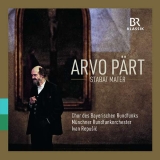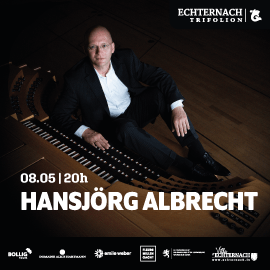 Arvo Pärt: Stabat Mater + Fratres + Silouan's Song + La Sindone für Violine & Orchester + Sumam + Für Lennart in memoriam; Stanko Madic, Violine, Chor des Bayerischen Rundfunks, Münchner Rundfunkorchester, Ivan Repusic; 1 CD BR Klassik 900335; Aufnahme 07.2020, Veröffentlichung 09.2021 (59'24) – Rezension von Remy Franck
Arvo Pärt: Stabat Mater + Fratres + Silouan's Song + La Sindone für Violine & Orchester + Sumam + Für Lennart in memoriam; Stanko Madic, Violine, Chor des Bayerischen Rundfunks, Münchner Rundfunkorchester, Ivan Repusic; 1 CD BR Klassik 900335; Aufnahme 07.2020, Veröffentlichung 09.2021 (59'24) – Rezension von Remy Franck
Das Schöne und Bereichernde an Arvo Pärts Musik ist, dass sie sehr unterschiedlich klingen kann. In den Orchesterstücken setzt Ivan Repusic auf einen vollen, dichten und sonoren Klang. Ohne Gefühlsduselei, aber auch ohne in sich gekehrt Meditatives will er uns offenbar mit Klanglichkeit überzeugen. Und mit Atem! Pärts Musik braucht Zeit, sie muss sich natürlich ausbreiten und das tut sie hier mit einer packenden Ernsthaftigkeit.
Pärts Stabat Mater, hier in der Fassung für Streichorchester und dreistimmigen Chor, ist der erklärte Schwerpunkt des Albums. Der Komponist benutzt das mittelalterliche Gedicht, um den Schmerz Marias über die Kreuzigung in einem meditativ langsam fließenden Cantus zu besingen, der das Leid in Verhaltenheit sublimiert, aber auch zu eindringlichen hier manchmal direkt scharfen Anrufungen führt, mit dazu kontrastierenden, manchmal ganz lebhaften Einlagen des Instrumentalensembles.
Repusic betont so das Schmerzliche der Musik und stellt es wirkungsvoll dem ruhigeren Schluss gegenüber. Diese Aufführung durch den exzellenten, flexibel singenden Chor des Bayerischen Rundfunks und die Streicher des Münchner Rundfunkorchesters unterstreicht die kompromisslose Natur der Musik.
Arvo Pärt’s music allows very different interpretations. That’s what makes it so enriching. In the orchestral pieces Ivan Repusic relies on a full, dense and sonorous sound. Without sentimentality but also without introverted meditation, he obviously wants to convince us with sonority. And with breath! Pärt’s music needs time, it has to spread out naturally and it does so here with a gripping seriousness.
Pärt’s Stabat Mater, here in the version for string orchestra and three-part choir, is the album’s stated focus. Pärt uses the medieval poem to sing of Mary’s pain over the crucifixion in a meditatively slow-flowing cantus that sublimates the suffering, but also leads to haunting here sometimes directly sharp invocations, with contrasting, quite lively interjections by the instrumental ensemble.
Repusic emphasizes the painfulness of the music and effectively contrasts it with the quieter conclusion. This performance by the excellent, flexibly singing Bavarian Radio Choir and the strings of the Munich Radio Orchestra underscores the uncompromising nature of the music.






















